
If you've ever sliced or torn a loaf of bread, you'll have seen the pattern of tiny holes and channels that perforate the inside. In some types of bread, these holes are very large, giving the bread a light, fluffy texture, while in others they are smaller. These holes are produced by the action of yeast during the bread-making process.
Fungus Among Us
The yeast used in baking bread, as well as in brewing bear, is a species of fungus. It's possible that the discovery of yeast as an agent for making bread rise occurred when naturally occurring fungus contaminated flour. These single-celled fungi need water and sugars to survive. When they come into contact with the flour and water used to make bread, they begin a series of reactions which result in the bread rising.
Yeast Feast
When activated by being brought into contact with air, water and flour, yeast to ferment the sugars present in the flour. As the microorganisms digest the sugar, they produce a number of waste products. One of these is carbon-dioxide gas. If the yeast are digesting in an anaerobic environment -- that is, an environment without air -- they also produce ethanol. In breadmaking, however, only small amounts of ethanol are produced, and these evaporate during baking.
It's a Gas
As the yeast continues to metabolize sugar and release carbon dioxide, the bread dough gradually rises. This occurs because the dough, if properly kneaded, consists of a network of long, stretchy gluten strands. Instead of parting to let the gas out, the flexible dough traps pockets of carbon dioxide, inflating as it does so and creating small voids within the dough. Once the dough has risen, it's ready to go in the oven.
The Finishing Touch.
Heating the dough leads to several important chemical changes. One of the most important is that the rising temperature of the oven kills the yeast, stopping the fermentation process. The gluten strands in the dough also harden, preserving the shape of the gas bubbles left by the fermenting yeast. When the bread comes out of the oven, the holes left by the yeast's byproducts are preserved in the texture of the bread.
Related Articles

How to Freeze Brioche
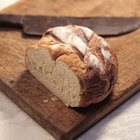
Does Heat Kill Lactobacillus Bacteria ...

How to Make Bread Chewy
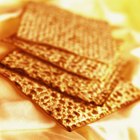
What Is Unleavened Bread?

Can I Substitute Bleached for ...

How Many Calories in Gluten-Free Bread?

How to Make Bread Tender

What Happens if You Leave Bread Dough ...

A List of Leavening Agents
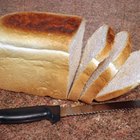
How to Bake Bread in the Oven

What Additives Are in Flour?

Main Ingredients of English Muffins

The Effects of Inhaling Air Dusters

What to Do With Pizza Dough When You're ...
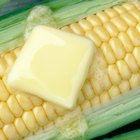
Common Food Emulsifiers

What Does Eggs vs. Oil Do for Bread ...

What Happens When Vinegar & Yeast Are ...
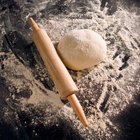
How to Preserve Dough That Has Risen
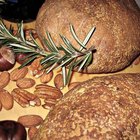
What Is Artisan Bread?

How to Make Bread From Colonial Times
References
Writer Bio
Dr James Holloway has been writing about games, geek culture and whisky since 1995. A former editor of "Archaeological Review from Cambridge," he has also written for Fortean Times, Fantasy Flight Games and The Unspeakable Oath. A graduate of Cambridge University, Holloway runs the blog Gonzo History Gaming.
Photo Credits
Michael Blann/Digital Vision/Getty Images